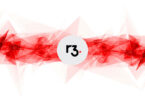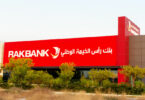R3, the company founded by a consortium of banks, is the subject of significant negative press this week. The one-sided commentary contradicts the feedback Ledger Insights is hearing from people in the enterprise blockchain space. In fact, R3’s technology has the potential to dominate in some sectors. And it’s starting to happen already.
Why the negativity?
Last year the company raised $107m from a consortium of banks. A week ago another $15m was injected into the company. This was likely the spark for the speculation.
R3 has developed one of the leading enterprise blockchain software protocols, Corda. Technically Corda is not a blockchain, it’s a distributed ledger technology (DLT).
But the company is perceived as riding the coattails of the blockchain hype. And the vision encapsulated in the original blockchain, Bitcoin, was the ability to have trustless transactions without parties like banks.
Bitcoin was unveiled at the height of the financial crisis. The bank bailouts and massive government liquidity injections have seen the major banks prosper. And banks own R3.
The VHS comparison
The Corda technology is currently in the top three enterprise blockchain offerings, and in some segments particularly banking and insurance, it’s arguably number one.
Corda’s in-house software team is exceptional and more than highly regarded.
But the best team and the best technology doesn’t always win. The Betamax versus VHS comparison comes up repeatedly in blockchain discussions. Betamax was the better technology. But it also was too expensive, a significant flaw.
Here’s the rhetorical question: What’s the best way to stall a startup that’s making headway? What’s their Achilles heel?
Enterprise blockchain competitors
There are several technology options for enterprise blockchain software, but only a few are widely used. The top three are R3’s Corda, Hyperledger Fabric, and Ethereum. Ripple and Stellar are prominent platforms for tokenization, and in banking, Digital Asset and Axoni are also players.
JP Morgan’s version of Ethereum, Quorum, is also popular though rumors of the bank’s plans to offload it might dampen adoption. The bank has been piloting loan issuance using Quorum, and IHT Markit is working on a Quorum syndicated loan solution.
The syndicated loan product may compete with the Finastra Fusion Lendercomm platform based on Corda which went live with ten banks in April. Currently, Lendercomm is back-office focused, but there are ambitious plans to move into secondary market trading.
Beyond banking, in talking to enterprises over the last three months, Ledger Insights found that many corporates started on Ethereum, but some moved onto Hyperledger Fabric and Corda.
Hyperledger Fabric is open source, and the big original contributor was IBM. Fabric is still IBM’s primary blockchain software.
Corda has the potential to be number one
Despite startup R3 going toe-to-toe with IBM, they’ve managed to make significant headway. Including outside their original banking focus.
Corda seems to be the platform of choice for insurance. EY and Guardtime created a maritime insurance platform Insurwave which is now in production. This is one of very few live enterprise blockchain deployments. Insurwave’s first client is Maersk a long-time and ongoing IBM client.
Two large consortia dominate insurance. B3i boasts as shareholders many of the world’s largest insurers and reinsurers including Swiss Re, Munich Re, Zurich, and Allianz. Initially, they started with Ethereum, but for some time they’ve worked with IBM and Hyperledger Fabric. They’ve not yet announced a switch to Corda, but at the recent Blockchain in Insurance Summit, it appeared to be common knowledge.
The other big insurance consortium is the US-based RiskBlock. The alliance supports the three main blockchain technologies, but it has a primary blockchain which currently is using Ethereum. Again no announcement yet, but there are strong rumors of a plan to move to Corda.
There are at least five other consortia or companies working on Corda insurance applications.
In Trade Credit, numerous companies are targeting the segment and four significant consortia. Two consortia are using Corda, and two are IBM clients using Hyperledger Fabric.
Why is Corda popular?
People repeatedly mention three reasons for adopting Corda. Firstly, privacy and permissions are crucial in business. Banks are super competitive, and they don’t want to leak information to rivals. Many like the flexibility of Corda’s control over permissions.
All blockchain software is relatively immature. The second feedback is that Corda is more mature than some of its competitors.
Java is the dominant language for developers working in enterprises. Blockchain software tends to use less mainstream languages. Corda uses Kotlin, Fabric uses Go, and Ethereum supports several languages but uses Solidity for smart contracts. So the third benefit is that Corda’s Kotlin is similar to Java, so a company doesn’t have to hire new staff.
While R3 might argue it’s interoperability design is crucial, and the topic has come up in conversation, it’s not yet perceived as a leading benefit.
The negative commentary
This particular paragraph in Fortune’s story is the trigger for this article:
“In this competition to create a blockchain platform for companies, skeptics say R3 has its work cut out for it. A big reason, they say, is because the company has been unable to attract a critical mass of developers to build out its Corda software. A lack of developers can be fatal to software projects because it can result in a dearth of applications, and create doubt among customers about its staying power.”
This comment could be valid for a public project like Ethereum. But is less relevant for software targeted at enterprises. And to the non-technical, this makes it sound like Corda is a dud.
A common analogy in blockchain is that the platforms like Corda and Fabric are similar to phone operating systems. For example, like Apple’s proprietary IOS and Google’s open-source Android. It’s probably true that the main contributors to open-source Corda – the operating system – are the R3 team, and they don’t have a vast number of external contributors.
That can be a pro and con. With too many contributors, there’s an element of ‘too many cooks’, and a single company can provide stronger leadership. It could be one of the reasons why Corda is a little more mature. Were R3 to abandon Corda, then the small number of contributors would be an issue.
On your phone, you also have apps like Facebook or Whatsapp sitting on top of the operating system. This is where, contrary to the Fortune comment and as already illustrated, Corda is doing well in enterprises.
The reality is that most big businesses using Corda, are likely to use the Enterprise version, not the open-source version. Large companies need the support that comes with licensed products.
Conclusion
Ledger Insights isn’t in a position to speculate on some of the other Fortune comments about a shortage of cash and free-spending mentality. Though having many deep-pocketed investors is rarely a bad thing.
The issue is the Fortune article omitted a key fact: R3 and Corda seem to be doing rather well selling to enterprise clients.
Update: R3’s CEO David Rutter responded to the Fortune article.






